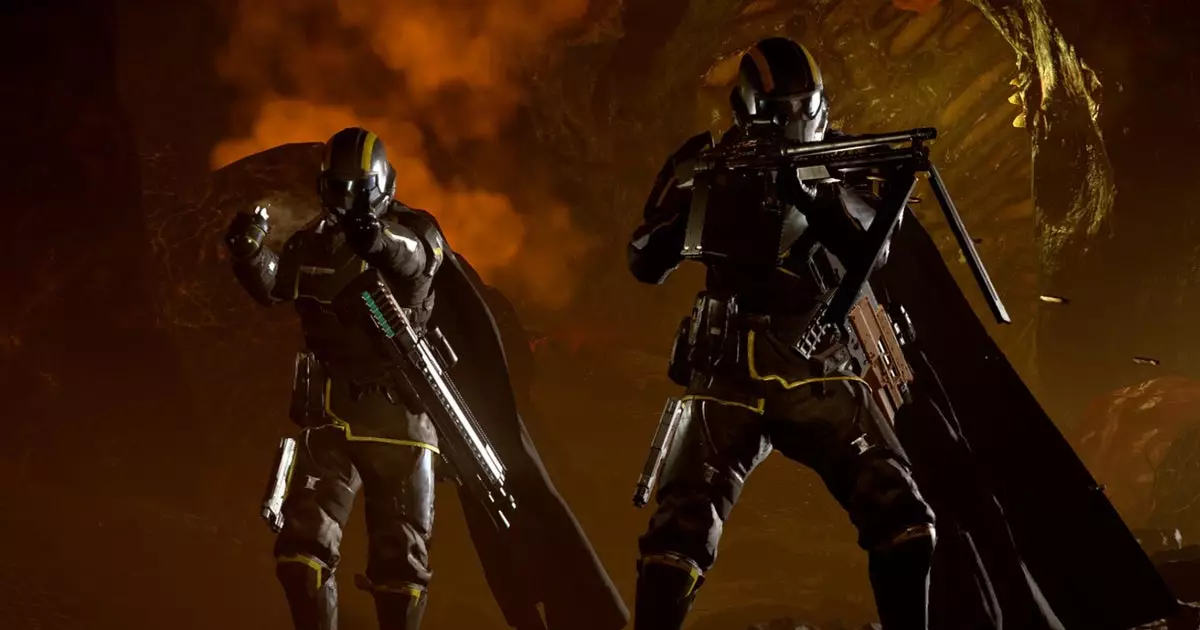In the ever-evolving landscape of video game development, maintaining player engagement while ensuring a balanced, bug-free experience remains a complex challenge. Arrowhead, the creators behind Helldivers 2, have recently encountered a series of hurdles that exemplify this difficulty. Their decision to temporarily disable certain enemy units—the Rupture Strain—reflects an ongoing struggle to fine-tune gameplay mechanics that, despite good intentions, can spiral into player frustration and backlash if not carefully managed. While removing content might seem a straightforward step, it raises critical questions about communication, transparency, and the studio’s understanding of player experience.
The core issue with the Rupture Warriors was their overpowering presence, making matches unpredictable and often frustrating for players. Initially, developers tried to patch the problem, unbalancing the units’ behavior through incremental updates. However, the quick emergence of complaints indicated that the solution was incomplete or insufficient. Instead of risking further destabilization, the decision to temporarily pull the Rupture Strain offline was pragmatic, but perhaps also reveals a tendency within Arrowhead to react defensively rather than proactively address root causes. It’s a clear reminder that balancing game mechanics is a sophisticated endeavor that demands patience and long-term planning, not just reactive fixes.
Transparency and Communication: The Backbone of Player Trust
In the gaming community, trust between developers and players hinges on clear, honest communication. Arrowhead’s announcement that they would “take the Rupture Strain offline” for five weeks indicates a responsible approach, yet whether this is enough remains to be seen. The studio’s public explanation about the “networking issue” as the cause of the aggressive enemy behavior suggests an attempt to frame the problem as technical rather than design flaws. While there’s merit in addressing technical glitches promptly, diminishing complex balance issues to technical faults risks alienating players who want to see their feedback taken seriously.
Moreover, the timing of this removal—mid-game cycle—can be perceived as a capitulation, signaling that the developers might lack confidence in their ability to rapidly overhaul or rebalance these units. This can create an impression of desperation, which might impact player perception of the game’s long-term viability. Ideally, Arrowhead would leverage this period not only for bug fixing but also to engage deeply with the community, providing transparency about their development goals and inviting constructive feedback.
The Larger Implications for Development Philosophy
The decision to isolate and temporarily remove problematic game content underscores a broader philosophical question: Should developers prioritize quick fixes over deeper systemic redesigns? In this case, Arrowhead seems to have opted for a shortcut—removing the Rupture Strain—rather than reworking their fundamental design or thoroughly testing the enemy AI. While this might bring immediate relief, it could also set a dangerous precedent that developers might fear harsh player feedback or encounter unforeseen bugs, leading to a cycle of reactionary patches.
Furthermore, the mention of networking issues as the technical root of the enemy’s overpowered behavior hints at the interconnected nature of gameplay mechanics and underlying infrastructure. It exposes a critical need for robust testing environments that simulate live conditions more accurately. Failing to do so can lead to reactive measures that possibly introduce new problems, compounding player dissatisfaction and creating a reputation for instability.
Learning from the Past to Shape Better Game Development
Arrowhead’s experience with Helldivers 2 and the recent issues with the Rupture Strain offer valuable lessons for the wider game development community. It’s a reminder that even with dedicated effort, balancing complex AI elements requires patience, iterative design, and transparent engagement with players. Developers must view these disruptions not as failures but as opportunities for growth—leveraging community insight and internal testing to refine their systems before release.
Ultimately, their approach to handling this crisis—by temporarily removing the problematic enemy—may be necessary short-term damage control, but the focus should remain on building resilient, adaptive systems that can withstand post-launch scrutiny. Game developers, especially those working on multiplayer or dynamically balanced content, need to embrace a mindset that values transparency, forethought, and a genuine willingness to evolve their creations based on player feedback, rather than quick fixes that may undermine long-term trust.
Arrowhead’s recent decisions reflect a broader truth: the path to a successful, player-first game isn’t paved solely with patches and hotfixes. It demands meticulous planning, honest communication, and an ongoing commitment to refinement—principles that, if adhered to, can elevate a game from its initial teething problems to a celebrated masterpiece.

